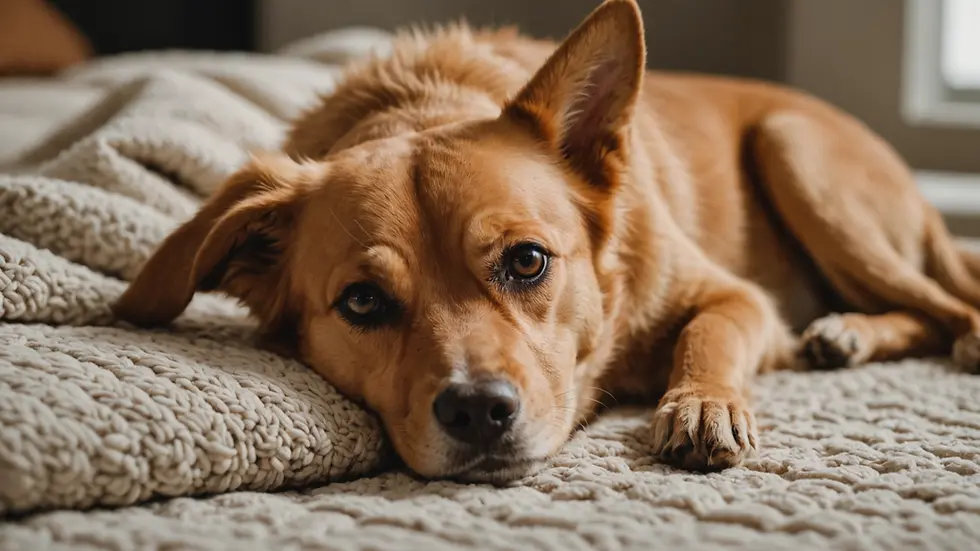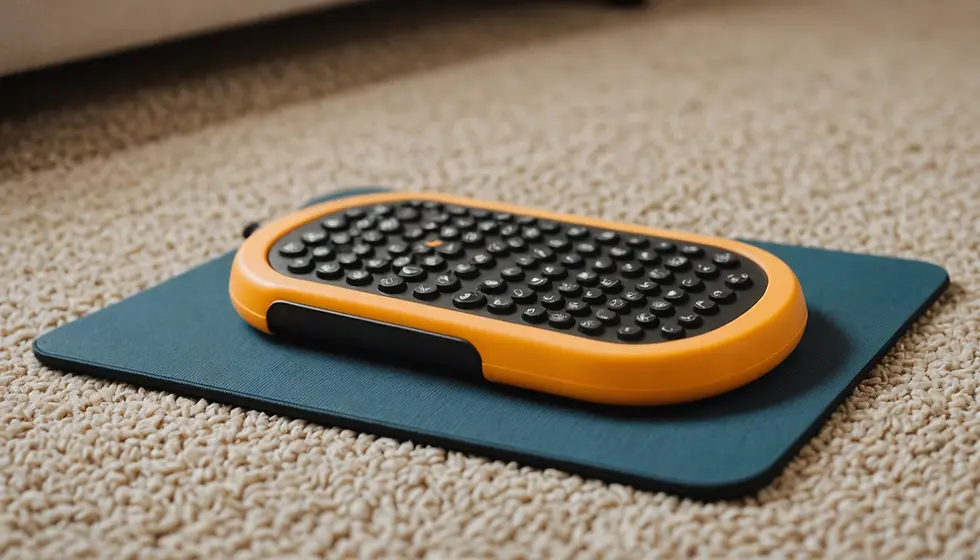How to Calm Your Dog: Effective Training Strategies for Overcoming Separation Anxiety
- stevenscanine
- Mar 26
- 4 min read
Separation anxiety can create significant challenges for both dogs and their owners. When left alone, dogs may experience intense distress, leading to behaviors such as destructive chewing and constant barking. Helping your dog cope with this anxiety is essential for a happy home. In this post, we will explore practical training strategies that can provide comfort and confidence to your furry friend.
Understanding Dog Separation Anxiety
Separation anxiety manifests when dogs become excessively attached to their owners. This strong bond can result in significant anxiety when you're away. Common behaviors associated with this condition include:
Barking or howling that can last for hours.
Destructive actions, like chewing furniture or digging through the trash.
Attempts to escape, which can lead to injuries.
Physical symptoms such as excessive drooling or urinating indoors.
A report from the American Humane Society states that nearly 20% of dogs experience some form of separation anxiety. It's vital to recognize and address these behaviors as part of your training efforts to foster your dog’s confidence.
Recognizing the Signs
Before implementing training strategies, recognize the signs of separation anxiety. Understanding the severity of your dog's condition can guide your approach:
Destruction: Chewed furniture, scratched doors, or other damage can indicate distress.
Vocalization: Continuous barking or whining may signal elevated stress.
Physical symptoms: Pacing, trembling, or restlessness can be signs of anxiety.
Identifying these behaviors helps you gauge your dog's anxiety levels and create a tailored training plan.
Slowly Increasing Independence
Start with Short Departures
Gradual exposure to being alone is one of the most effective strategies. Begin with short departures:
Create a safe space: Set up a comfortable area for your dog with their favorite toys and blankets. This safe haven will help them feel more secure.
Reward calm behavior: When you return after a short time, shower your dog with praise if they remain calm. Positive reinforcement creates good associations with your absence.

Build Up to Longer Absences
Once your dog is comfortable with short departures, gradually extend the time:
Increase the duration: Move from five to ten, then fifteen minutes. Each successful separation builds confidence.
Make it routine: Incorporate these short absences into your daily schedule, so your dog becomes accustomed to this pattern.
Consistency builds your dog's confidence and helps reduce anxiety.
Use Positive Reinforcement
Rewarding Independence
Positive reinforcement is key to changing your dog's behavior. Reward them for staying calm during your absence:
Use treats and encouragement: Give your dog a treat when they remain relaxed during your short departures.
Create a secure area: Designate a cozy spot where your dog can feel safe when left alone.
This approach reshapes your dog's perception of being alone, boosting their confidence.
Desensitization to Departure Cues
Dogs often recognize cues linked to your departure, leading to anxiety. Work on desensitizing them to these signals:
Practice cues without leaving: Pick up your keys or slip on your shoes without leaving the house to help your dog associate these actions with non-exit situations.
Change your patterns: Occasionally modify your routine to prevent your dog from predicting your departures.

Providing Safe Distractions
Engaging Toys
Offering engaging toys can help redirect your dog's energy when you are not home:
Puzzle toys: Toys designed for solving challenges keep your dog mentally stimulated. For instance, a puzzle feeder can take 15-30 minutes to solve, providing distraction as you leave.
Interactive toys: Items that move or make sounds can capture your dog's attention while you are away.
These distractions help shift your dog’s focus from your absence to engaging playtime.
Calming Aids
Calming aids can further help manage your dog's anxiety. Consider these options:
Calming beds or wraps: These products can help create a sense of security and comfort, which many stressed dogs find soothing.
Aromatherapy: Implement calming scents like lavender or chamomile, known for their soothing properties.
Incorporating these aids creates a calming environment, easing your dog's stress.
Gradual Extinction
Fading Attention
A gradual approach to fading your attentiveness can ease anxiety:
Minimize interactions before leaving: Simple goodbyes set a calm tone. Avoid prolonged farewells.
Practice short, casual exits: Begin leaving without fuss. This teaches your dog that alone time is a normal part of life.
Counter-Conditioning
Counter-conditioning can modify your dog's emotional response when you leave:
Create positive associations: Offer a special treat or toy each time you leave. This helps your dog associate your absences with positive experiences.
Desensitize to Sounds
Certain sounds may trigger your dog’s anxiety, such as keys jingling.
Practice these sounds randomly: By exposing your dog to these cues without leaving, you can lessen the connection between the sounds and your departures.
Using gradual extinction and counter-conditioning strategies can significantly reduce separation anxiety.

When to Seek Professional Help
If your dog continues to show signs of severe separation anxiety after trying these strategies, consider consulting a professional.
Assessing severity: A professional can evaluate the severity of your dog’s anxiety and rule out other potential issues.
Personalized strategies: They can provide tailored strategies to meet your dog’s unique needs.
In some cases, your veterinarian may suggest medications to manage anxiety alongside behavioral techniques.
Final Thoughts
Addressing separation anxiety in dogs is a challenging yet fulfilling journey. By understanding your dog's unique needs and using positive reinforcement, you can help them gain confidence in spending time alone. Keep track of your progress, remain patient, and don’t hesitate to seek professional help when needed.
With dedication to training, you can improve your dog's quality of life and strengthen the bond you share. Together, you can work towards overcoming separation anxiety, leading to happier moments both at home and apart.






Comments